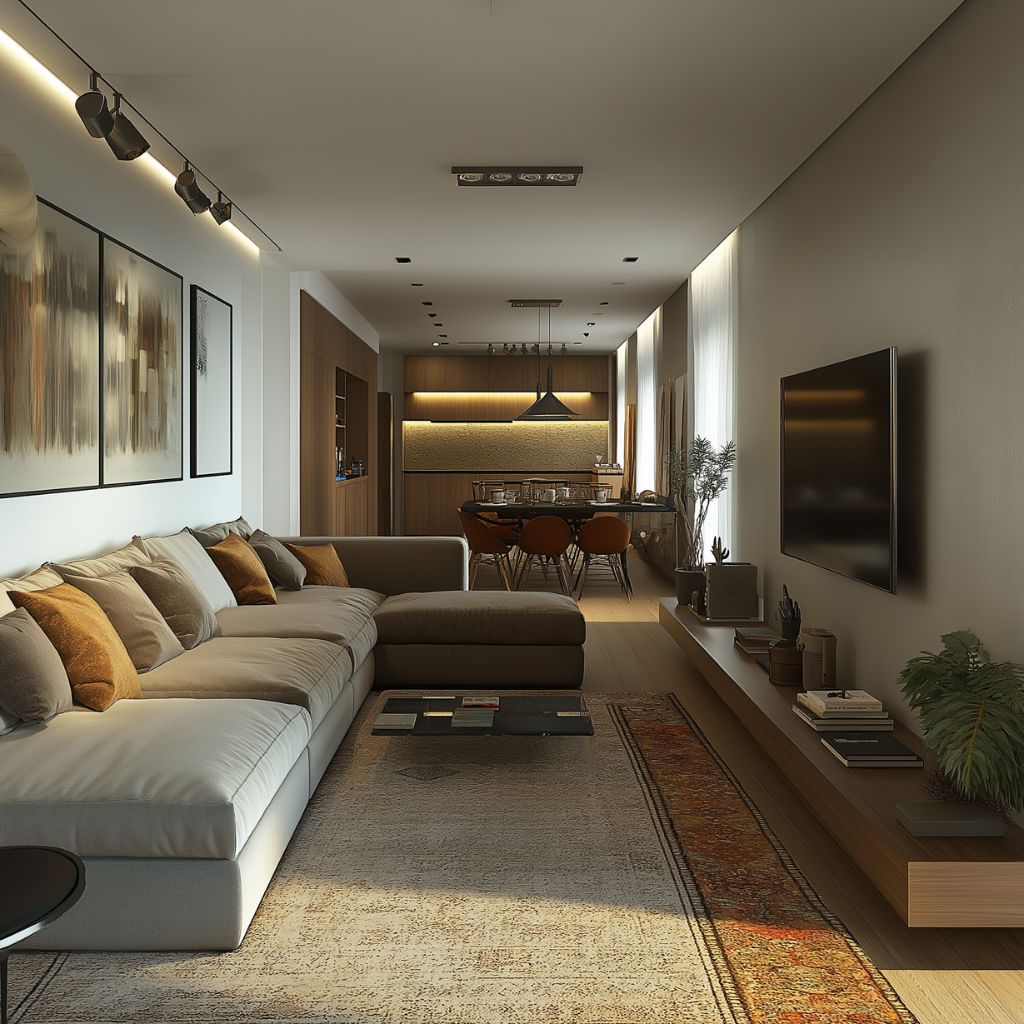Long Living Room Layouts: Smart Design Tips for Decorating Narrow Spaces
Table of Contents
Introduction
Decorating a long and narrow living room can feel like trying to fit a square peg into a round hole. Do you line everything up against the walls? Create multiple seating zones? How do you make it cozy without crowding the space?
If this sounds familiar, you’re not alone. Long living rooms are one of the most common layout challenges in older homes, urban apartments, and open-concept designs. While the elongated shape offers plenty of potential, it also requires thoughtful planning and smart styling to feel cohesive and livable.
In this post, we’ll walk through expert-approved layout tips, furniture strategies, and design solutions to transform your narrow space into a beautifully balanced room. Whether you’re starting from scratch or updating an existing setup, these ideas will help you maximize comfort, flow, and function—without sacrificing style.
In-Depth Outline
1. Understanding the Challenges of Long Living Rooms
- Narrow proportions can create tunnel vision or wasted space.
- Poor flow leads to awkward furniture placement or traffic jams.
- Without zoning, the space can feel empty or uninviting.
Table: Common Long Living Room Issues & Fixes
| Challenge | Solution |
| “Bowling Alley” Effect | Break space into functional zones |
| Poor Flow | Leave clear pathways between zones |
| Echoey or Sparse Feeling | Use rugs, textiles, and layering |
2. Create Distinct Zones Within the Space
- Divide the room into separate functional areas: seating, reading, entryway.
- Use rugs, lighting, and furniture placement to define zones.
- Floating furniture (vs. wall-hugging) helps break up the space.
3. Choose the Right Scaled Furniture
- Select narrow or leggy furniture that won’t overwhelm.
- Use modular or low-profile sofas to maintain openness.
- Avoid bulky coffee tables—opt for nesting or oval styles.
Table: Furniture Scale Guide for Long Rooms
| Furniture Type | Recommended Style | Why It Works |
| Sofa | Low-profile or modular | Maintains sightlines, flexible |
| Coffee Table | Oval or nesting | Easier flow, softer edges |
| Bookshelves | Slim, vertical units | Adds height without crowding |
4. Use Rugs to Anchor Zones
- Place multiple rugs to define seating and activity areas.
- Go for natural materials: wool, jute, or low-pile synthetics.
- Leave space between rugs to avoid visual clutter.
5. Optimize Lighting for Balance
- Mix ambient, task, and accent lighting across zones.
- Use floor lamps or sconces where ceiling fixtures don’t reach.
- Mirror placement helps reflect natural light through the length of the room.
6. Vertical Styling & Wall Decor
- Use tall bookshelves or vertical artwork to draw the eye up.
- Incorporate gallery walls to break up long wall spans.
- Add floating shelves for decor and storage without bulk.
7. Create Natural Walkways and Flow
- Allow 24–36 inches between furniture for movement.
- Float furniture to guide traffic patterns through the space.
- Avoid blocking pathways with oversized decor.
Detailed Content Expansion
2. Create Distinct Zones Within the Space
One of the most effective ways to decorate a long living room is by breaking it up into functional zones. This eliminates the dreaded “bowling alley” effect and makes the room feel intentional rather than under-furnished or overwhelming.
2.1 Zoning with Rugs and Furniture
Rugs are your best friend here. A large area rug under the main seating area helps anchor that zone, while a smaller rug can set apart a reading nook or workspace at the other end of the room.
Use furniture arrangement to separate areas:
- A sofa and two chairs can define a central gathering space.
- A console table or bench behind the sofa subtly separates a dining or office zone.
- A bookshelf or vertical plant stand can act as a soft divider without closing off the room.
2.2 Consistency and Flow
While you want each zone to feel distinct, they should still be visually cohesive. Stick to a unified color palette and material mix to maintain flow. For example, use warm wood tones or black metal across furniture pieces to tie zones together.
Table: Easy Zone Ideas for Long Living Rooms
| Zone Type | Suggested Furniture/Decor | Function |
| Conversation Zone | Sofa + 2 Chairs + Coffee Table | Entertaining, lounging |
| Reading Nook | Armchair + Lamp + Side Table | Solo relaxation, reading |
| Entry Zone | Console Table + Mirror + Storage | Drop zone, visual anchor |
By zoning your long living room, you create structure, flow, and functionality, making every inch of space feel intentional and lived-in.
3. Choose the Right Scaled Furniture
The furniture you choose plays a major role in how spacious or cramped your long living room feels. In narrow layouts, bulky or oversized pieces can quickly overwhelm the space and interrupt natural movement.
3.1 Go Low-Profile and Leggy
Opt for low-profile sofas or sectionals with visible legs to keep sightlines open. The space underneath adds visual breathing room, while slimmer arms and backs reduce visual weight.
For seating:
- Armless chairs or accent stools can provide flexibility.
- Modular sofas work well in multi-zone rooms and allow easy rearrangement.
3.2 Coffee and Side Tables Matter
Avoid heavy, boxy coffee tables. Instead, go for:
- Oval or round tables, which encourage better flow.
- Nesting tables, which can tuck away when not in use.
- C-tables or slim side tables for smaller corners.
Table: Furniture Scale Guide for Long Rooms
| Furniture Type | Recommended Style | Why It Works |
| Sofa | Low-profile or modular | Maintains sightlines, flexible |
| Coffee Table | Oval or nesting | Easier flow, softer edges |
| Bookshelves | Slim, vertical units | Adds height without crowding |
Pro Tip: Consider a sectional with a chaise on one end—it helps define space while offering functionality, especially in open-plan layouts.
Conclusion
Designing a long, narrow living room doesn’t have to be a challenge—it’s an opportunity to get creative with layout, styling, and multifunctional living. By zoning the space, choosing well-scaled furniture, and using elements like rugs, lighting, and vertical decor, you can turn even the trickiest floor plan into a warm, cohesive, and stylish retreat.
Whether your goal is to entertain, relax, or simply maximize the square footage you have, these design strategies will help your living room feel balanced, comfortable, and beautifully curated.

